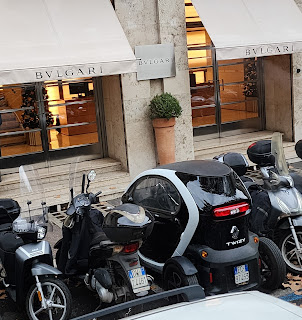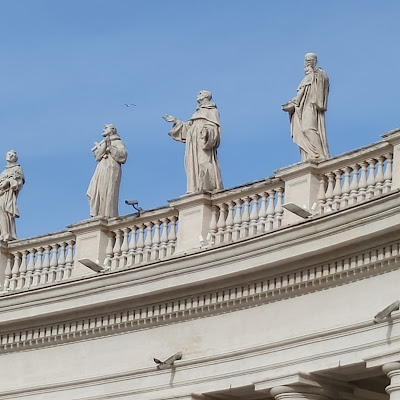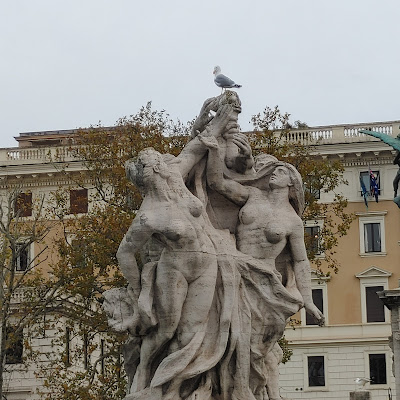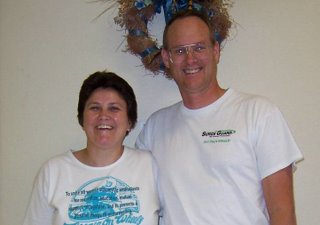 |
| The Vatican is over an hour's drive from where we are docked at Civitavecchia. This is a drone shot of the port. Our ship was docked approximately where the one in the photo is docked. |
 |
| View from the ship at sunrise. |
 |
| The octagonal Maschio juts out of the side facing the port. |
 |
| Porta Livorno is an opening in the defensive walls built in 1761 by request of Pope Clemens XIII, with the aim to connect the port with the north side of the city. |
 |
| The road ran through some old defensive works. |
 |
| As we gain the outskirts of town, the elevation gives us a view of both the city and the port. |
 |
| Umbrella trees lined up between fields. |
 |
| Many seals had the fish symbol of Jesus. We saw some 300-year-old graffiti on the walls. |
 |
| Palatine Hill, one of the seven hills of Rome, is home to ruins of Roman Imperial palaces, temples and baths. |
 |
| Circus Maximus was a stone and marble arena that could seat 250,000 Romans for chariot races. |
 |
| The Basilica of Maxentius, one of the largest monuments of the Roman Forum, was built between 308 and 312. It was the largest building in the Forum, and the last Roman basilica built in the city. |
 |
| This monument to Giusepe Mazzini, one of the leading activists for the unification of Italy, was unveiled on June 2, 1949. |
 |
| Tempio de Portuno is dedicated to Portunus, the god of keys, doors and livestock, and so granaries. It is the main temple dedicated to the god in the city. |
 |
| St Peter's Basilica from St. Angelo Bridge. |
 |
| Almost hard to walk on a sidewalk due to the vast number of scooters in Rome. |
 |
| The bus parking area must have been full for these buses to be parked outside the structure. |
 |
| Floorplan of St Peter's Basilica. We are entering at the bottom where is says vestibule. |
 |
| Pope Leo III's coat of arms in in front of the Door of the Sacraments. |
 |
| This plaque above the door commemorates the opening of the door in 2000 by Pope John Paul II. |
 |
| To the right, behind the curtain is La Pieta by the Florentine sculptor Michelangelo Buonarroti. We'll get to that later. |
 |
| First look at the letters in the golden ribbon. Each of those letters is seven foot high. |
 |
| This column contains three statues. The "babes" at the bottom are adult sized. |
 |
| The statue of St. Teresa in the middle is 15 foot tall |
 |
| and the statue at the top is 21 foot tall. |
 |
| This purple slab of porphyry stone marks the spot in Old St. Peter's where, on Christmas night in 800 AD, the pope crowned the French king Charlemagne as "Holy Roman Emperor." |
 |
| On the floor there are plaques that show where the biggest churches of the world would end of the were placed inside St. Peter's. |
 |
| Here we can begin to see the dome over the alter. |
 |
| Rising above the altar is the baldacchino, a 95-foot-tall canopy. This is Bernini's masterpiece and first work in St. Peter's. The ancient tomb of St. Peter lies directly below the altar. |
 |
| Bernini took nine years to make it, from 1624 to 1633, and used 6,200 k. of metal. The monument is typical of the 17th-century style: it stands on four pedestals of marble on which, in the papal escutcheons, a sequence showing "motherhood" is carved, liberally scattered with the heraldic bees of the Barberini to whose family Pope Urban VIII belonged. It was he who had commissioned Bernini to make this canopy in 1624. It rests upon four gigantic, twisted columns, each 65 foot high, adorned with sprigs of olive and bay, among which the graceful figures of cherubs appear, Acanthus leaves entwine the base and the capitals. The spiral fluting of the columns suggests upward movement. Like the portable canopies used in processions to cover the Eucharist, fringes and tassels dangle from the top of the covering. Inside the "ciborium" is a dove, the symbol of the Holy Spirit, in a burst of golden rays. Above the frieze on each capital, four angels, the work of Francois du Duquesnoy, offer garlands, while between them couples of smaller angels support the Pope's emblems: the keys, the tiara, the book and sword. The vertex, where four vast ribs and palm branches converge from the four corners, is crowned by the cross, set on a golden globe. |
 |
| Entrance to the tomb of St. Peter, which is located directly below the alter. |
 |
| Peter was the first bishop and Pope of Rome. |
 |
| This ancient statue of St. Peter, portrayed as he gives a blessing and preaches, while holding the keys to the kingdom of heaven is famous throughout the world. |
 |
| Behind it, what seems to be a fine brocade draping, is actually a mosaic. |
 |
| Body of Pope John XXIII |
 |
| The Papal Altar where only the Pope celebrates Mass. It was consecrated by Clement VIII on June 5, 1594, on top of several other older altars. |
 |
 |
| Another size reference, a service was being held in the apse. See the people? |
 |
| Monument to Pius VIII. The Pope is shown kneeling, accompanied by a statue of Christ enthroned, with statues of Sts. Peter and Paul. |
 |
| View toward the entrance. |
 |
| Altar of St Sebastian and Tomb of St John Paul II. |
 |
| Another entrance to Vatican City from St. Peter's Square. |
 |
| Vatican post office. |
 |
| St Peter's Square restrooms were missing something. |
 |
| I wandered down the Via della Conciliazione and took a look back at the basilica. |
 |
| Out along the Tiber, I could see the Vittorio Emanuele II Bridge that I would cross later. |
 |
| Sculptures on the Vittorio Emanuele II Bridge |
 |
| Back at St Peter's Square, looking up the colonnade on the left. |
 |
| Colonnade on the right. |
 |
| Another shot up the Tiber to St. Peter's |
 |
| I always wonder how people can get on and off the bikes parked so close, but how the heck did that person get out of that tiny contraption? |






















































No comments:
Post a Comment